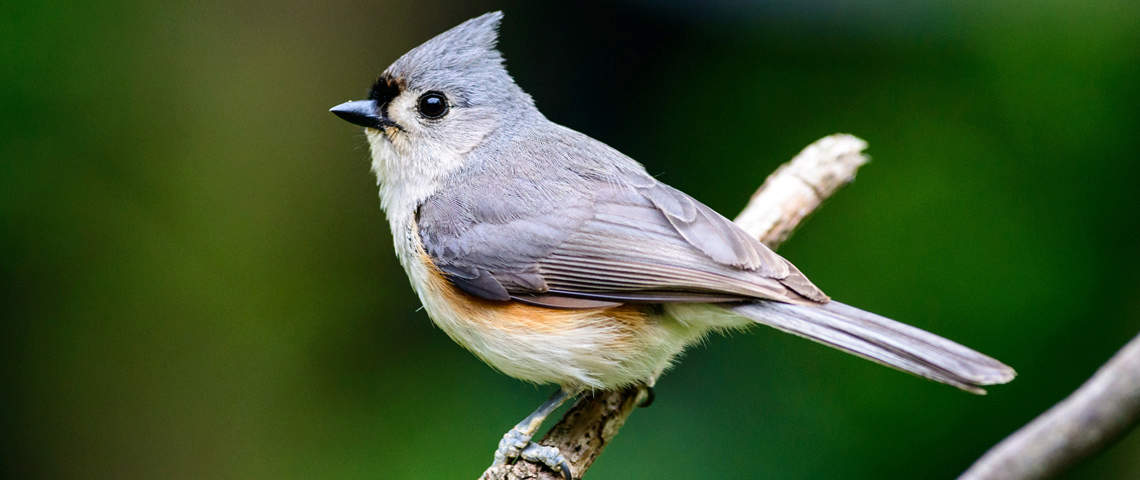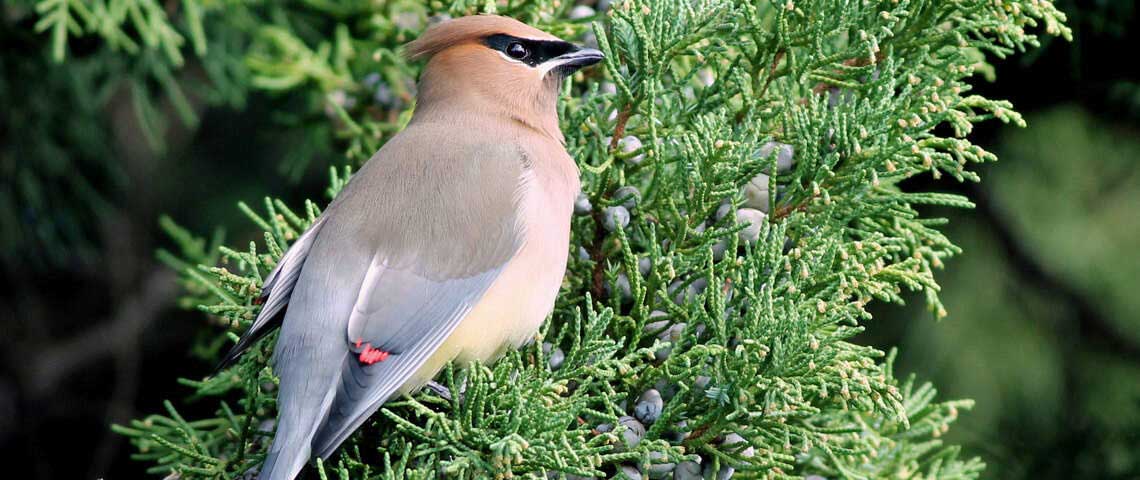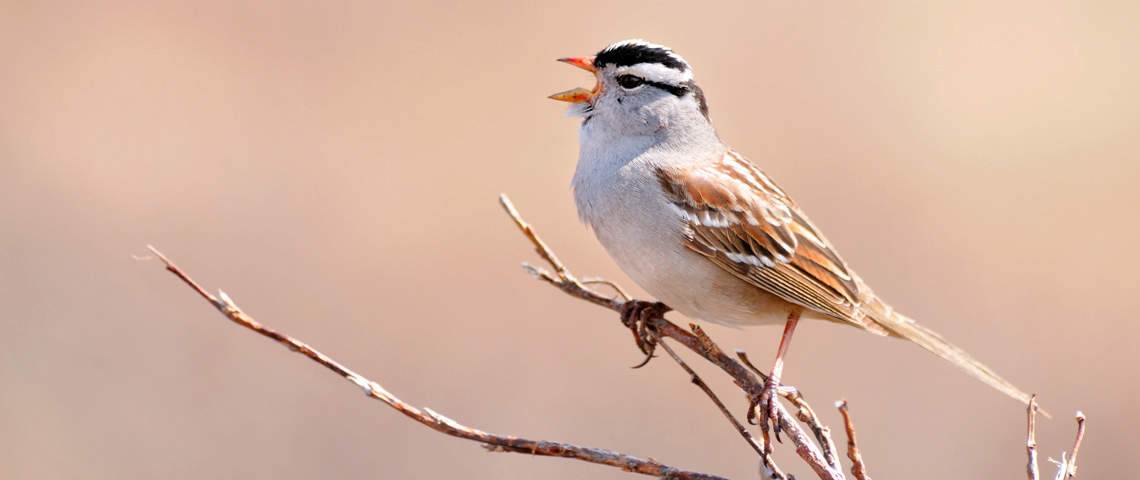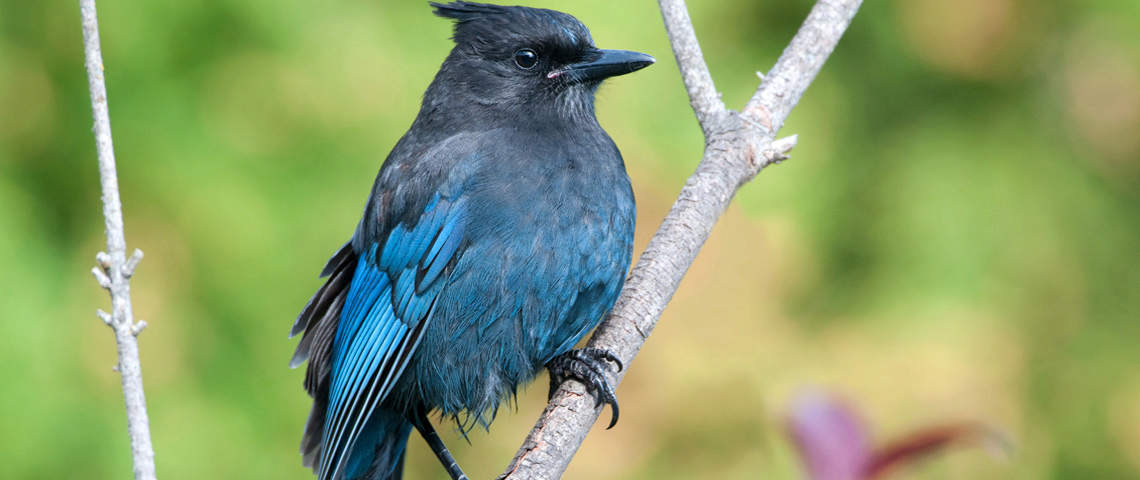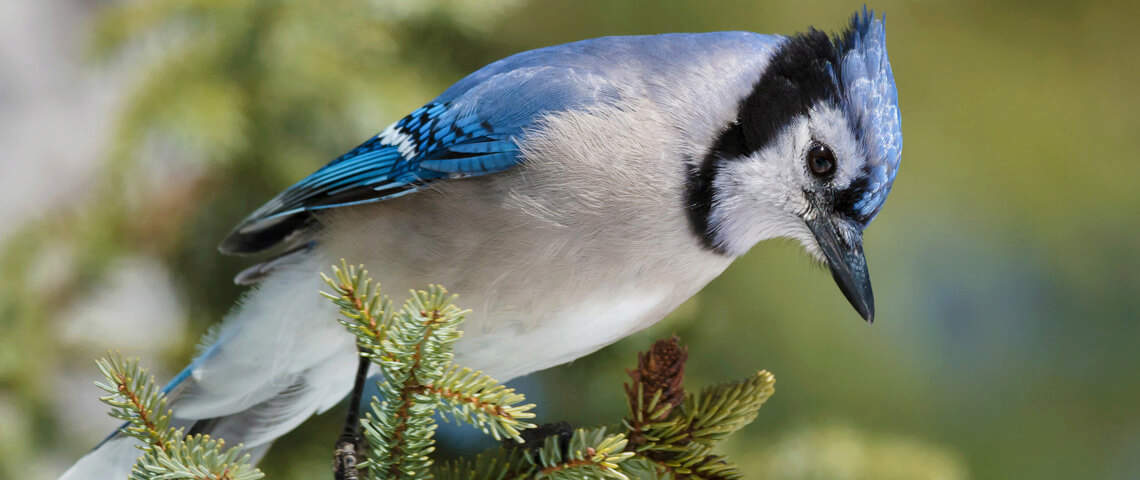Featured Birds: Tufted Titmice
Tufted Titmice are as pleasing to our eyes as to our ears, and their acrobatic habits make them fun to watch.
Like their close relatives the chickadees, titmice are omnivores. Over the course of a year, about 2/3 of a titmouse’s diet is animal matter, including insects, spiders, snails and, at feeders, suet. The rest of their diet is plant matter, such as seeds, nuts, and berries. They always pick the largest seeds they can find.
They carry seeds off one at a time to a safe perch. They hold one seed in their feet and peck at it to open and eat it, or to tuck it away to eat later. Titmice cache, or hoard, extra food to eat when food is harder to find. Usually they remove the shells before hoarding seeds. They hide them in tiny holes in trees, or wedged behind bark.

In midwinter, titmice spend most of the day in small family groups consisting of a mated pair and one or more of the young they raised the previous summer. Adults usually stay on the same territory throughout the year.
When mixed flocks of chickadees, nuthatches, and other small birds pass through the territory, the titmice often join them. Titmice are dominant over chickadees and other smaller species; often the smaller birds fly off when a titmouse alights on a feeder.
In spring, most of the previous year’s young disperse, but some remain with their parents to help them raise a new family. Even though they’re so sociable by day, titmice are solitary by night, each sleeping in its own cavity. Chickadees often excavate their own holes in trees, but titmice don’t, so they depend on holes dug out by woodpeckers.

When winter is over, titmice find a new hole to build a nest in because they don’t make a nest in the holes they use for sleeping. They construct the soft nest at the bottom of the cavity, lined with soft plant fibers and fur from a variety of animals.
How do they get fur? A birder in Ithaca, New York, once noticed a raccoon’s tail sticking out of a huge cavity in a big tree where the raccoon was sleeping. A titmouse alighted on the tail, plucked out a beak full of fur, and flew off to its nest. A few minutes later, the titmouse returned, landed on the tail again, and plucked more fur. The raccoon apparently rolled over inside the tree, its tail twirling around as the titmouse held fast. The little bird made at least six trips to pluck out fur for its nest.
The same birder also watched another titmouse pulling fur off of a dead squirrel in the middle of a busy road. People who brush their dogs or cats can make titmouse lives easier by putting clumps of fur into a clean suet feeder. In spring, titmice will pull out some of the fur for their nests. Other birds and small mammals may use the fur at other times of year as well.

